Our Top 10 Summer Watering Tips
As the warmer summer temperatures are upon us, proper watering becomes even more crucial for the health of your garden.
Whether you have a lush garden or a few potted plants on your patio, we hope you’ll find our top watering tips a helping hand, ensuring your plants receive the hydration they need to withstand the heat and thrive in dryer conditions.
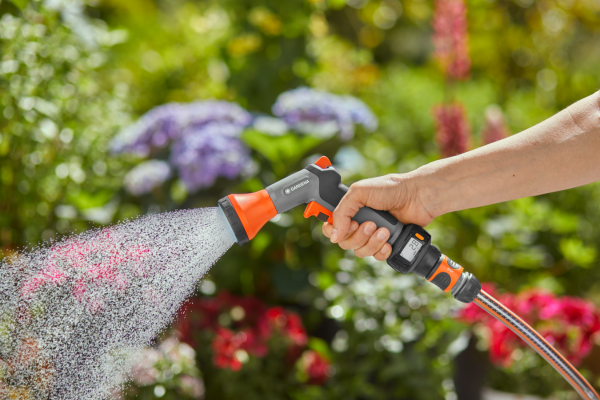
1. Maintain good soil moisture
Most plants depend on consistent watering. However, allowing the soil to slightly dry out before watering can promote healthy root growth.
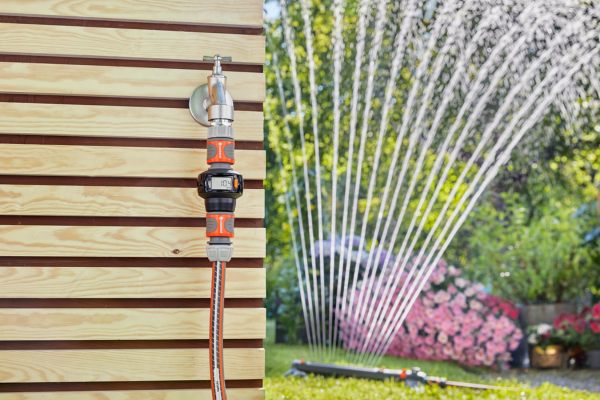
2. Water less often, but thoroughly
It is better to water less often but with ample water rather than providing small amounts of water frequently.
There is no simple rule of thumb for watering as each plant has different needs – for example, container plants in hot, sunny weather may need daily watering, while mature shrubs might only require watering during extreme drought conditions. For example, in flower beds, one to two watering sessions per week are generally sufficient.
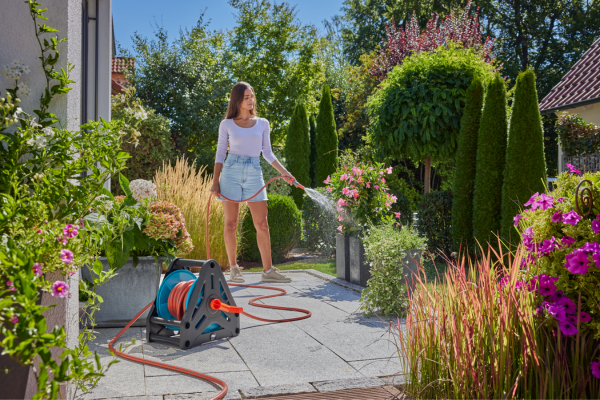
3. Water late evening or early morning
Watering soil that has cooled down in the evening or at night results in less water evaporation compared to watering on hot soil during the day. Plants can then absorb enough water to sustain themselves before the next day’s heat.
If possible, water in the morning as plants utilise water when the sun rises. Morning watering also keeps the foliage and soil surface drier for longer periods, discouraging slugs, snails, and mildew diseases.
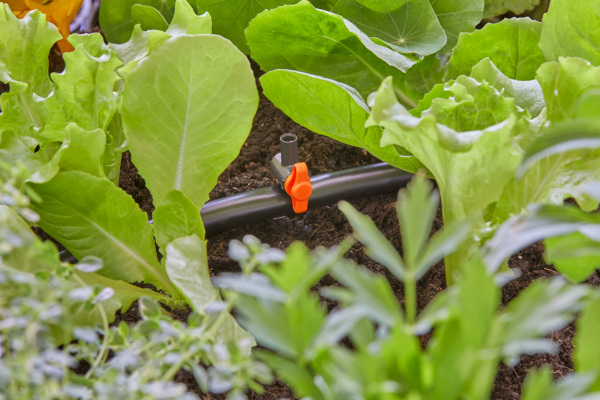
4. Keep leaves dry to avoid diseases
Plants primarily absorb water through their roots from the surrounding soil or compost. It is essential to direct water to where it is needed, specifically the root tips and not the leaves. Wet or humid foliage encourages fungal problems and increases water evaporation from the leaf surfaces.
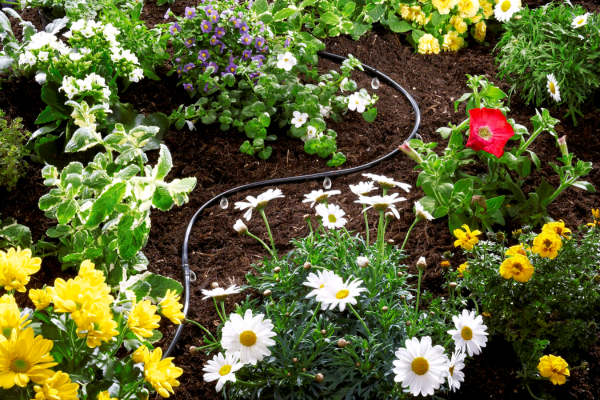
5. Ensure the water reaches the roots
Proper watering involves ensuring that water reaches the plant’s roots adequately. Insufficient amounts of water often only wet the upper layer of soil. Adequate watering is particularly crucial for crop plants until their produce is ready for harvesting, as they rely on consistently moist soil.
Micro-drip irrigation systems are incredibly beneficial, saving water resources and transporting the water directly to where it’s needed.
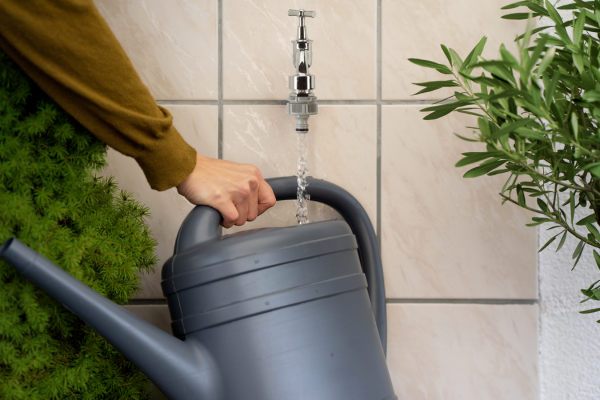
6. Water gradually
Water requires time to seep into the soil. Instead of letting precious water in the garden bed flow away unused, it is better to water in multiple sessions, allowing the soil to absorb the water effectively.
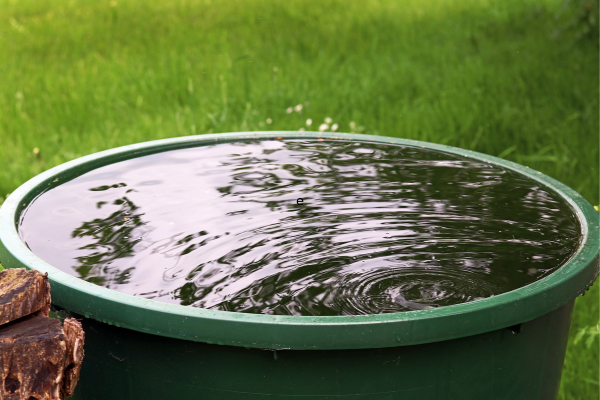
7. Use rainwater
Rainwater is an excellent choice for plants and should be the first option for gardeners if it can be collected and stored. Tap water requires treatment and energy for delivery and may contain minerals that exceed the needs of many plants, especially ericaceous plants. In dry spells, water from indoors can also be used. Installing a water butt is highly beneficial for harvesting rainwater. When rain is predicted, set up water butts or prepare existing ones to collect the water. If you don’t have a water butt, you can still use watering cans or old bins to collect rainwater. We stock a selection of water butts to get you started.
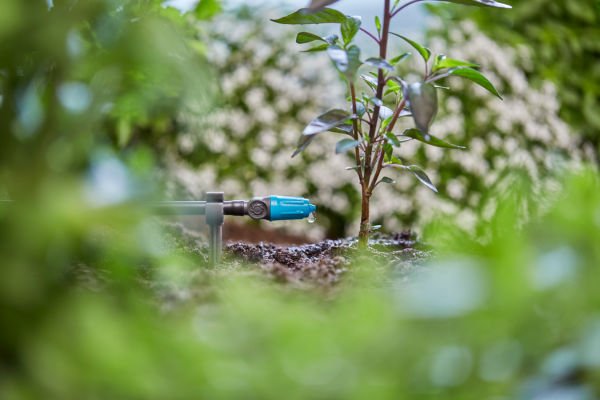
8. Use water-saving irrigation methods
Drip irrigation minimises water contact with leaves, stems, and fruits of plants, thereby reducing the risk of disease. It keeps the spaces between plants dry, improving access and reducing weed growth. This method saves time, money, and water due to its high efficiency, and most importantly – gives you more time to relax in your beautiful garden.
You’ll find our extensive range of Gardena Micro-Drip irrigation products available here at our Garden Centre, with our expert team on hand to guide you on what’s best for your plants.
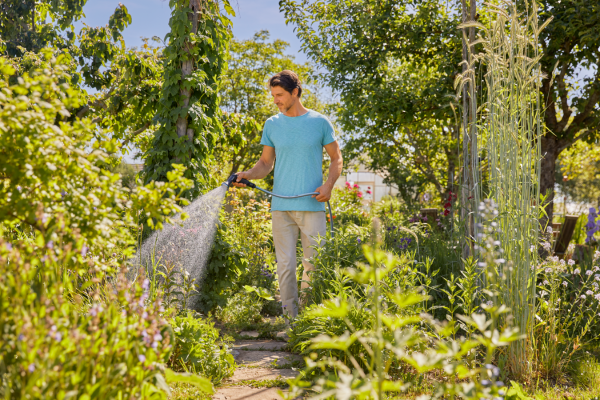
9. Avoid waterlogging
Prolonged periods of sitting in soil saturated with water reduces the oxygen available to the roots and causes yellow leaves, root rot and eventually – a dead plant. Ensure proper drainage to prevent this issue, especially during wet summers and winter.
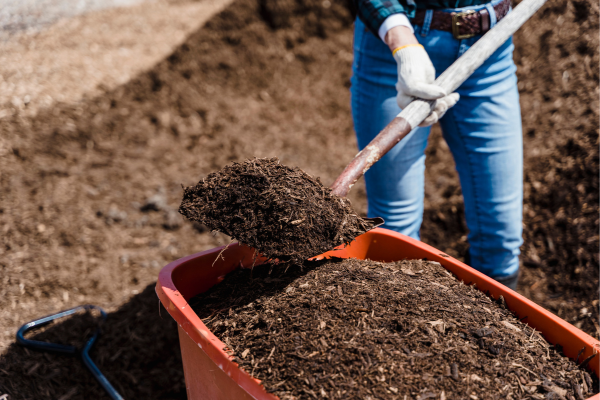
10. Bear in mind your soil type
Soils rich in clay minerals have better water-holding capacity, allowing water to be retained more evenly.
Sandy or chalky soils require more frequent watering but in smaller amounts, as excess water drains away easily.
Clay-based soils, on the other hand, can be watered less frequently but require larger quantities of water due to their higher water-holding capacity. Adding organic matter to the soil increases its ability to retain water.
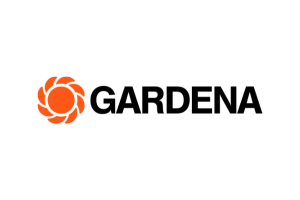
The right watering is essential to ensure that your plants and your lawn stay green and healthy. We’re proud to stock an extensive range of GARDENA products, with everything you need to give your garden the irrigation supply it needs.
Hose Fittings | Hoses | Hose Reels | Nozzles | Sprayers | Sprinklers | Micro-Drip Irrigation | Soaker Hoses | Multi-Channel Irrigation
